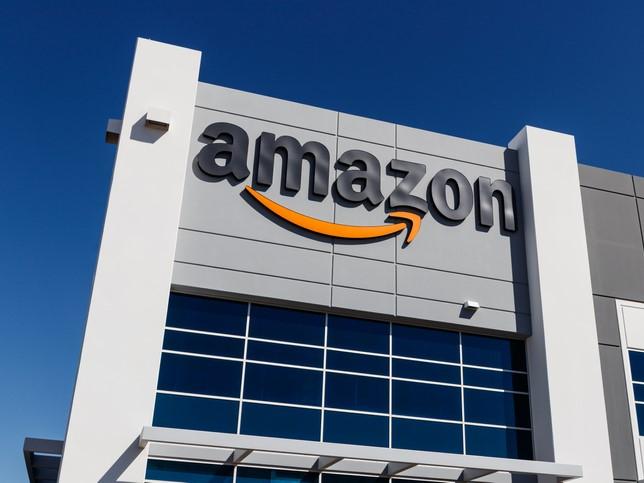In July 1995, Amazon opened as an online bookseller. The company’s founder, Jeff Bezos, knew nothing about retail. Or about selling books. He was not technically savvy about internet technology, either. But he foresaw its potential. With a degree in electrical engineering and computer science, he had worked for Wall Street investment firms and been smitten by the immense potential of digital technology to change the way we do business.
Amazon made it easy for customers to select from millions of items – books then, everything now. Today, its warehousing technology and management practices stand out as a pinnacle of innovation. It has built high-quality digital systems and created a new business, Amazon Web Services, that has outpaced its vast retail empire. Amazon Prime is now one of the world’s largest consumer membership clubs. Following suit, there are now many online warehouses across industry – from obvious ones such as Alibaba or Shopify to less obvious ones such as She-In, for example – that are all outpacing traditional retail models.
So what do these digital innovators do that brings them such success? And, more pressingly, as we move into an increasingly digital future, what can universities learn from them?
Lesson one: put the customer first
These companies use digital technology smartly: they adapt to what users want to do, not the other way around. Digital interaction machines make this possible, and not only when a customer orders but throughout the full cycle of the customer’s experience. Every touch point is designed to be a positive experience, from sourcing an item to ordering, payment, delivery, customer support, even returns and refunds. Prioritising what the customer wants not only entices them to buy again but encourages custom from others.
Digital technologies have allowed companies to do this with increasing efficiency when used properly. Chatbots and interactions supported by artificial intelligence, augmented reality and so on can help to ensure that customer needs are swiftly met.
Imagine the impact this approach could have on our universities. If applied smartly, such digital systems could create a personal interface for every student that adapts to their individual learning requirements and provides automated help from a smart-learning management system.
This technology could support a student from selecting and starting their studies to tracking their classes, connecting with classmates, assessing their skills, completing exams and even supporting career development. By using AI to power tailored chatbots and enhance communication, augmented reality to create virtual classrooms, every student touch point would not only become a positive experience but also generate data that, once analysed, can serve to further improve the learning experience.
Lesson two: apply tech in every aspect of operations
Back in the 1990s, Amazon introduced a new focus word for its business: “fulfilment”. How do you ensure that customer expectations are fulfilled? Amazon’s advanced warehouses are directly coupled to customer front-end operations. As you search and select products on the website, smart algorithms are calculating the probability of you ordering, the availability of goods and transport, loading capacity, possible alternative fulfilment methods and, if needed, alternative offers.
Inside processes are fully linked, seamless and totally automated. Amazon even purchased its own warehouse automation company, Kiva Systems, to be able to accomplish this effectively. Products and processes are split into small, manageable modules with proper interfaces and clear business logic (or rules) to link separate modules together, a bit like Lego blocks.
Of course, such techniques could vastly improve university operations, rethink the learning process from the viewpoint of the individual student and even design the curriculum as separate modules that can easily be linked together. By unbundling the curriculum, universities can enable learning to be easily customised. Furthermore, by automating the entire process, a set of defined rules can be developed to determine what modules are required for specific qualifications, allowing students to get all they need from their education.
Just like Amazon assesses the products available from its suppliers, universities could use advanced algorithmics to help students select the most appropriate modules from partners in the university’s educational ecosystem to provide a personalised learning path that best fits students’ individual needs and goals.
Lesson Three: create communities
The platforms of digital innovators enable customers to exchange information, form communities and become influencers. This network effect means the platform becomes as valuable to the customer as the products they seek.
This resembles the bonding of students as they meet and study together and go on to become members of the alumni network, supporting others through the university experience. Universities should be aware of the value to be gained from developing such digital platforms – ones that can reach out to every student, while on campus or online, during, after and even before their studies.
It seems so clear that universities need to adapt, better and quickly, to the digital era. In the business world, after all, new companies without a history have replaced those that haven’t moved with the times.
America’s Barnes & Noble did not move and Amazon prospered. In 2012, Andrew Ng and Daphne Koller started Coursera “to democratise access to high-quality education”, and it has since grown to serve 82 million registered learners across not just colleges and universities but businesses and governments worldwide. When Coursera went public in April 2021, it was valued at £3.4 billion and now has access to the financial market for further growth. Is this a harbinger of the future Amazon-ification of higher education?
Remember, Jeff Bezos did not come from a retail background, yet he profoundly changed the world of retail. The unsettling and increasingly likely reality is that, for those institutions that cannot switch gear and innovate, others will step in to fill the gap.
Peter Vervest is emeritus professor of information management and networks at the Rotterdam School of Management at Erasmus University Rotterdam in the Netherlands.




comment2
(No subject)
(No subject)